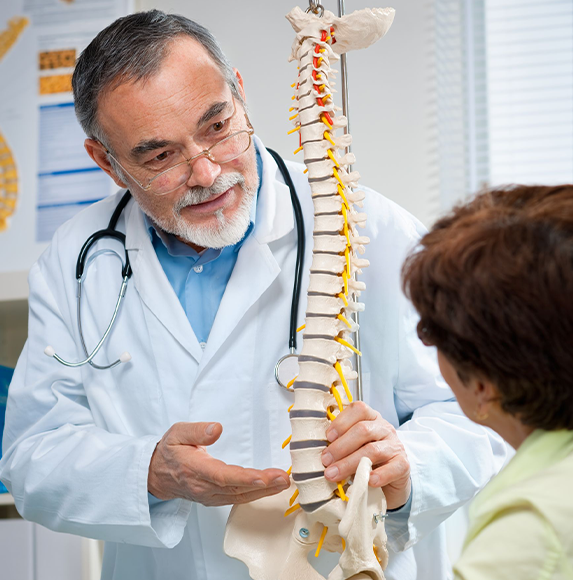Testosterone Replacement Therapy in the UK
Vale Health Clinic
Overview
Testosterone is a reproductive hormone that’s found in the bloodstream of both men and women. It gets produced by the testicles and adrenals glands in males. However, the testicles are responsible for the production of most of this hormone.
Low testosterone levels can cause several problems in men, such as erectile dysfunction, impotence, and muscle atrophy. We can treat this condition with testosterone replacement therapy. With that said, you should try to identify the cause of low testosterone to avoid future relapses.
Read on to learn about testosterone replacement therapy and who can benefit from it. But first, we need to cover some common symptoms of low testosterone levels.


Vale Health Clinic
What is testosterone replacement therapy?
Testosterone replacement therapy (TRT) is a form of hormone therapy used to treat men who have low levels of testosterone.
Your healthcare professional can administer TRT in several ways, including gels, patches, injections, and pellets placed under the skin.
TRT is typically recommended for men who have symptoms of low testosterone, such as low sex drive, erectile dysfunction, fatigue, and decreased muscle mass. There is also some research that supports the use of TRT for depression and osteoporosis.
See how much better going to the doctor can be
Get started with Vale Health Clinic in Tunbridge Wells
Vale Health Clinic
What are the normal levels of testosterone?
The normal range of testosterone levels in adult men is generally between 300 and 1,000 nanograms per deciliter (ng/dL). However, this range varies depending on the laboratory that is performing your test.
Additionally, some experts consider a range of 240-950 ng/dL as normal. It is important to note that testosterone levels can fluctuate during the day, with levels being highest in the morning and lowest in the evening.
Certain factors, such as obesity, sleep disturbances, and medications, can all affect testosterone levels.
Make sure to consult with your primary care physician to determine if your testosterone levels are within the normal range and to evaluate any symptoms or concerns related to testosterone levels.
How do you know if you need testosterone replacement therapy
While most people think of testosterone as a hormone that uniquely influences the reproductive system, it is actually more important than that!
Testosterone plays a major role in the health of men, giving them many of the male characteristics, such as hair growth, strong bones, and lean muscle mass.
Here are the most common symptoms seen in patients with low testosterone levels:
Erectile dysfunction
Erectile dysfunction is a common finding in patients with hypogonadism. However, your physician will make sure it’s not the result of another underlying disease, and most importantly, not psychogenic in nature.
Decreased libido
Testosterone is the hormone that increases sex drive in men, so it would make sense for low testosterone levels to cause decreased libido.
Hair loss
The hair pattern in some regions of the male’s body is the result of testosterone. For instance, having chest hair, a beard, and a mustache, are all the results of high testosterone levels.
Thus, hair loss in regions that used to be hairy can point your physician toward the diagnosis.
Infertility
The Leydig cells in the testicles need a signal from testosterone to produce sperm. Hypogonadism will cause the number of sperm cells to drop.
While infertility could have several causes and may be secondary to other medical conditions, low testosterone is always on the list of differential diagnoses.
Fragile bones
Osteoporosis is a condition in which bone mineral density (BMD) is low. Consequently, you may experience fractures after minimal trauma.
Typically, a small amount of testosterone gets transformed into estrogen, which is a well-established bone protector. However, when you’re already dealing with low testosterone levels, your body won’t sacrifice it to produce estrogen. As a result, your bones become fragile and fractures follow.
Muscle atrophy
Testosterone is essential in the stimulation of growth hormones to induce muscle growth. Its absence produces the exact opposite result – Muscle atrophy.
Fatigue
Testosterone is indispensable for producing energy and the metabolism of macronutrients. In fact, most patients with hypogonadism experience unexplained fatigue early on in the disease process.
Unfortunately, this symptom is extremely unspecific, which can trick physicians to miss the diagnosis.
Decreased mental acuity
Testosterone receptors are spread throughout the body, including the brain. This hormone stimulates mental vigilance and concentration.
For this reason, low levels of testosterone will make the patient feel “slow”.
Mood swings
Also a common symptom of hypogonadism, mood swings affect men when their testosterone levels are low.
As you may expect, this symptom can be overlooked very easily.
Request an Appointment Now
Testosterone Replacement Therapy
FAQs
Frequently Asked Questions
TRT is typically recommended for men who have symptoms of low testosterone.
Common side effects of TRT include:
- Acne
- Breast enlargement
- An increase in red blood cells
TRT may also increase the risk of prostate cancer. This is why it’s important to have regular check-ups with your doctor.
TRT is generally safe when used under the supervision of a certified healthcare professional. However, as with any medical treatment, there are risks and potential side effects.
TRT may help to increase muscle mass in men who have low testosterone levels. With that said, you should not use TRT as a muscle-building supplement. Exercise and diet are at the core of muscle hypertrophy.
TRT may help to increase sex drive in men who have low testosterone levels. Note that decreased libido could be the result of numerous conditions. Therefore, it is best to visit your doctor for a comprehensive diagnostic plan.
The effects of TRT can vary depending on a number of factors, including:
- The patient himself (anatomy, physiology, personal traits)
- The method of administrating the drug
- The dose of the drug
Generally, testosterone levels will improve within a few weeks of starting treatment.
























